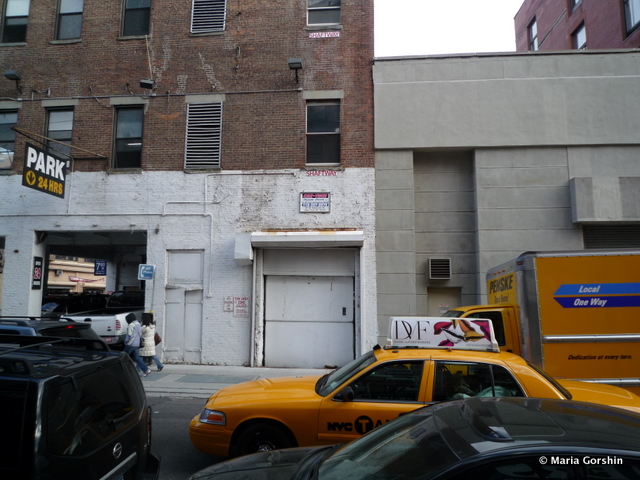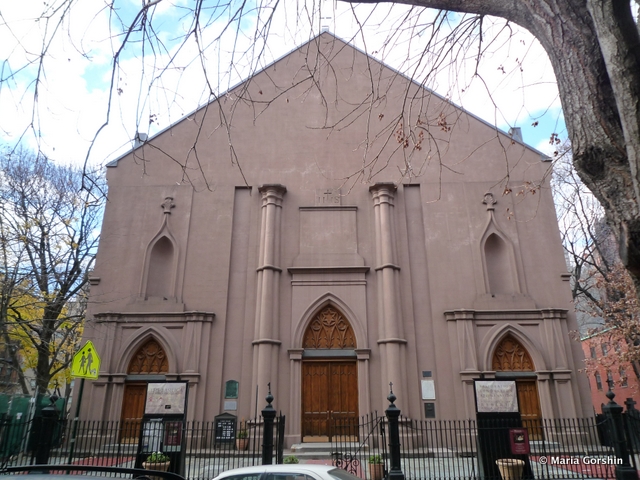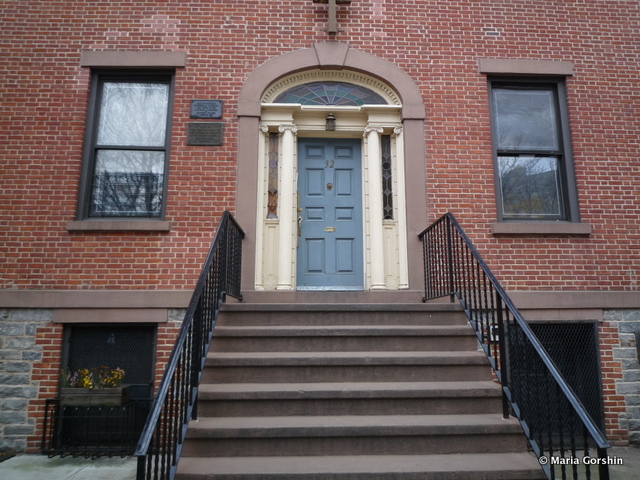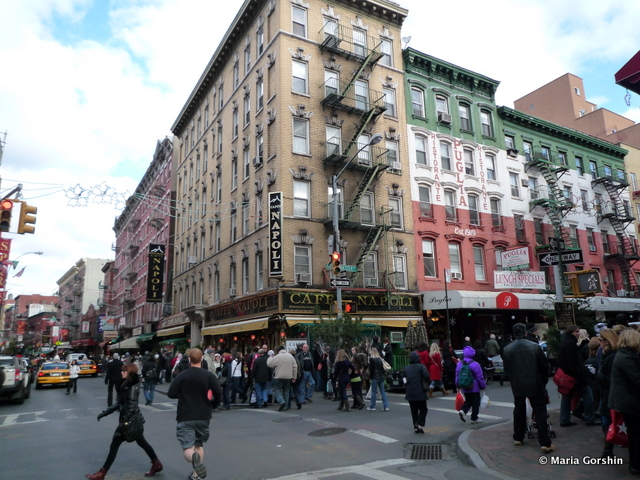When St. Patrick’s Old Cathedral in Little Italy became New York’s first basilica late last year, all eyes, and camera lenses, were focused on that elegant church. But even as that one building’s historical and religious significance was honored by decree of the Pope himself, two small, unassuming buildings stood nearby holding bits of New York history and stories all their own. All someone needed to do was look, observe, ask a few questions and the stories might come tumbling forth. I decided to poke around a bit.
It turned out that 256-258 Mott Street had an interesting past as suspected.
What is now a co-op building used to be known as the 14th Ward Industrial School. It was built for John Jacob Astor and his wife Charlotte in 1888 to serve, in the words of The New York Times over 100 years ago, “a district of wretchedness, poverty and squalor.” It became a school, run by the Children’s Aid Society, where impoverished immigrant children could receive daily lessons in “industry, thrift and cleanliness” along with hot meals.
 The 14th Ward Industrial School, today (256 Mott Street)
The 14th Ward Industrial School, today (256 Mott Street)
The Astors bought the lot for $21,000, hired Calvert Vaux, the co-designer of Central Park, to design the building and paid $42,000 to have the Victorian Gothic structure built. The little red brick building on Mott Street became a safe haven for generations of children in a neighborhood that used to be part of the infamously violent Five Points district. Today its classrooms are residences and the building stands serene amidst cafes and boutiques.
I shared a few words of my Little Italy visit with my mother-in-law who grew up in the area. That opened up the floodgates of neighborhood stories that threatened to outshine the big doings via The Vatican at Old St. Pat’s. The details, and the one haunting story she shared with me that day, confirmed for me what New York City has revealed to me over and over again throughout the years — that every one of New York’s oldest buildings has a story to tell and each one seems worth repeating.
I sat with my mother-in-law, Christina, in her Tuscan-themed kitchen to talk about her growing up in the 1940s in New York City’s Little Italy, “a time when everyone knew each other’s business” and news about the neighborhood was carried by voices, window to street.
Here is a little taste of our conversation. My mother-in-law’s words appear in bold:
I grew up at 149 Elizabeth Street across from a garage and the Knickerbocker Ice Company. All day long men would shout out ice orders for restaurants, fish markets and produce shops. In the summer we played in the street, games like “Stoop Ball” and “Kick the Can.” When it got too hot we would go by the ice company and they would break off small ice chunks for us kids. We’d eat it like ice cream to cool off. There was a candy store downstairs but that’s where the numbers were played so we were never allowed to go in there.
What were some of the aromas, sights and sounds that stand out to you from that time?
I remember Saturday nights, kids playing jump rope and roller skating in front of the building while the men sat outside, smoking and looking at the girls. We were always on the block. Around the corner it was bumper to bumper with push carts — young and old men singing in Italian, selling vegetables, fruit, fish, calamari. If you didn’t like the price you went to the next guy. My father had a bakery shop on Mott Street. His friend owned a pizzeria and a flower shop. Oh the aromas! I was small so my father built a wooden platform behind the counter at his bakery so that I could see over it to sell bread — just on weekends and after school. He gave me a metal staff. I’d hit the floor, “toon, toon,” and he could rush up from the basement if anyone gave a hard time. My father called me, “A helluva sales girl.”
 My mother-in-laws childhood home, as it appears today
My mother-in-laws childhood home, as it appears today
It sounds like it was a great place to grow up, so much color and so safe”¦
Well, yes, everyone knew each other so there wasn’t going to be any nonsense. One day we were playing outside and we found money, then more money, suddenly it was like a trail that led to a basement courtyard where there were laundry lines between buildings. The money trail stopped just above the basement steps where below it was pitch black. We showed my father who told the men. He said, “Go to your mother,” and the men went down. We never heard anything, we never saw anything, but something happened but. Still, we don’t know who they found.
No police, just taken care of – that must have been shocking though. (Silence–time to change the subject.) Where did you go to school?
My sisters and I walked to St. Patrick’s across the street. I remember the year of my First Holy Communion. Sister Monica was our teacher and she would always say to us, “I just want to live long enough to see you all get to make your communion.” On the day of the ceremony we stood inside the school in line, each child on a metal step, as she checked our veils and ties. We were quiet, preparing to lead the procession into the church across the street. She stood on the first landing as she said a prayer. Then she stepped back and her heel must have caught in the hem of her habit because she fell backwards hitting all the way down along those metal steps. She died instantly. She landed and her face was dead smack in front of me bleeding profusely. The other nuns came running. “Run to the rectory! Get the priest!” We were in blood splattered communion dresses. The last thing I remember was the priest taking out his beads for last rites. We went to our communion, walking ashen down the center of the church. There was crying. I was shaking.
 St. Patrick’s
St. Patrick’s
 The fateful steps
The fateful steps
That’s horrifying…I’m so sorry. What a nightmare for you, all those children, all the parents waiting in the church. What happened afterwards?
We preserved the dress. It would have been sacrilege to wash or throw it away with the blood of a nun who had made a request of God and he had granted it right down to the 11th hour.
End of conversation, as my mother-in-law always says, but hopefully the start of a growing interest for you, Untapped readers, in the oldest buildings that stand quietly around you each day. They too have stories to share. Stop and do a bit of research — you might be surprised at what you find.
Maria Gorshin also writes for her blog, City Girl Writes, sharing stories from the Upper West Side and more.






